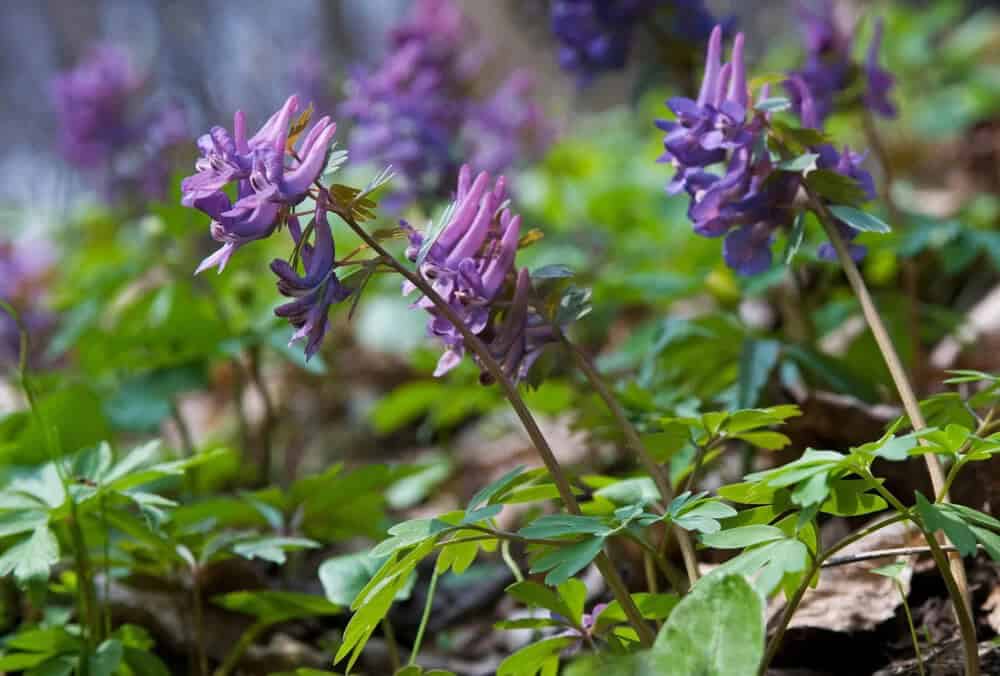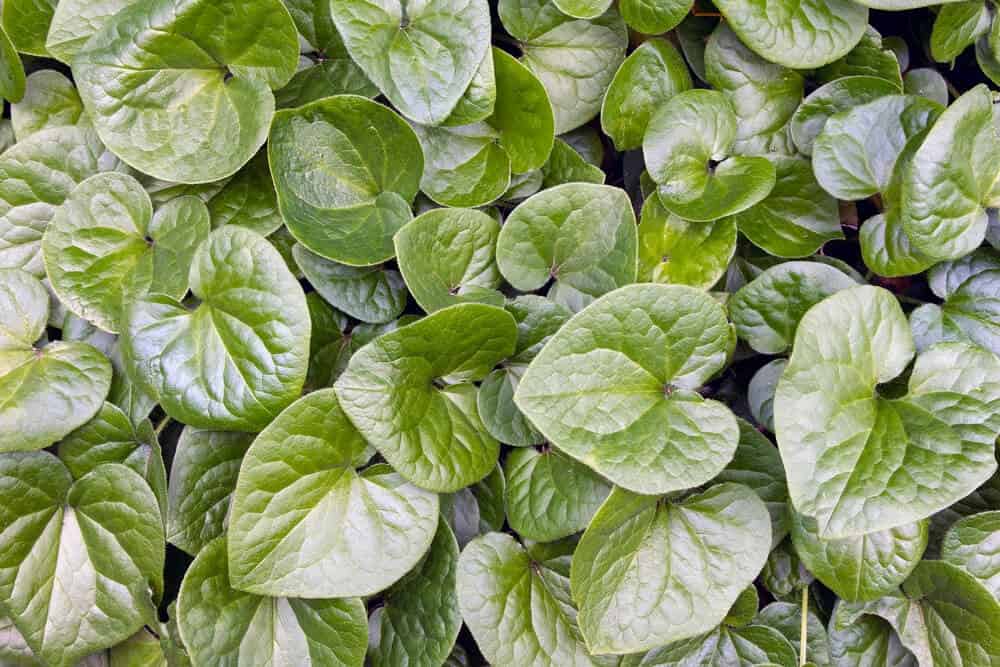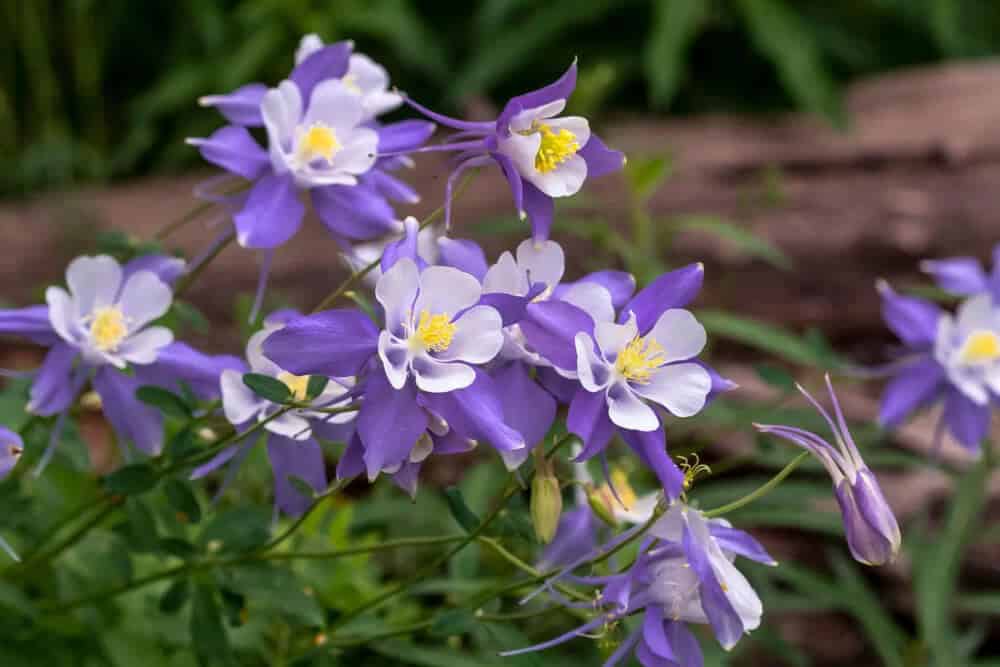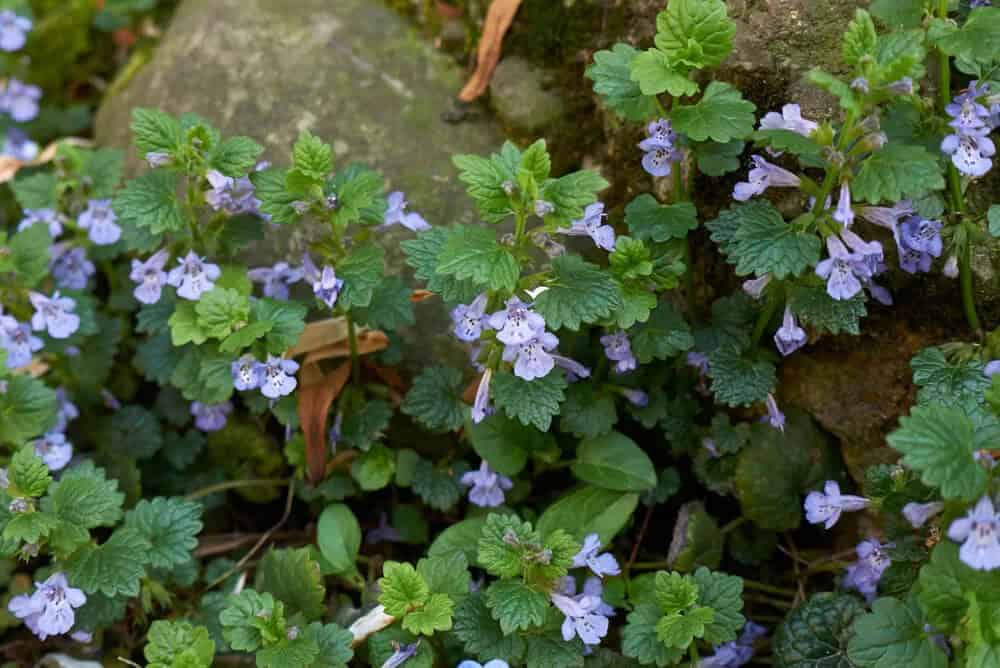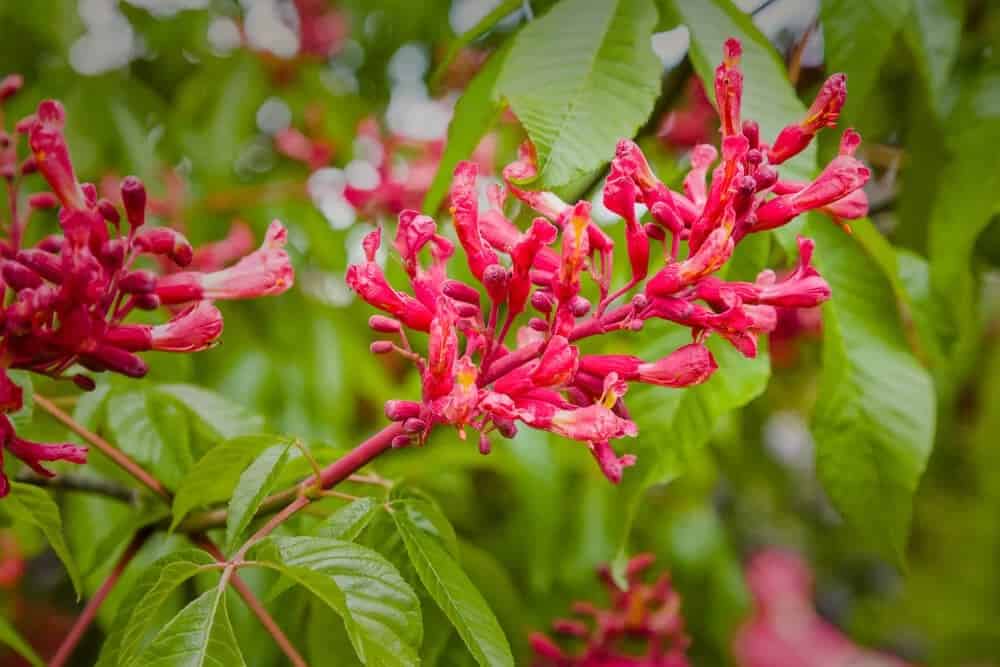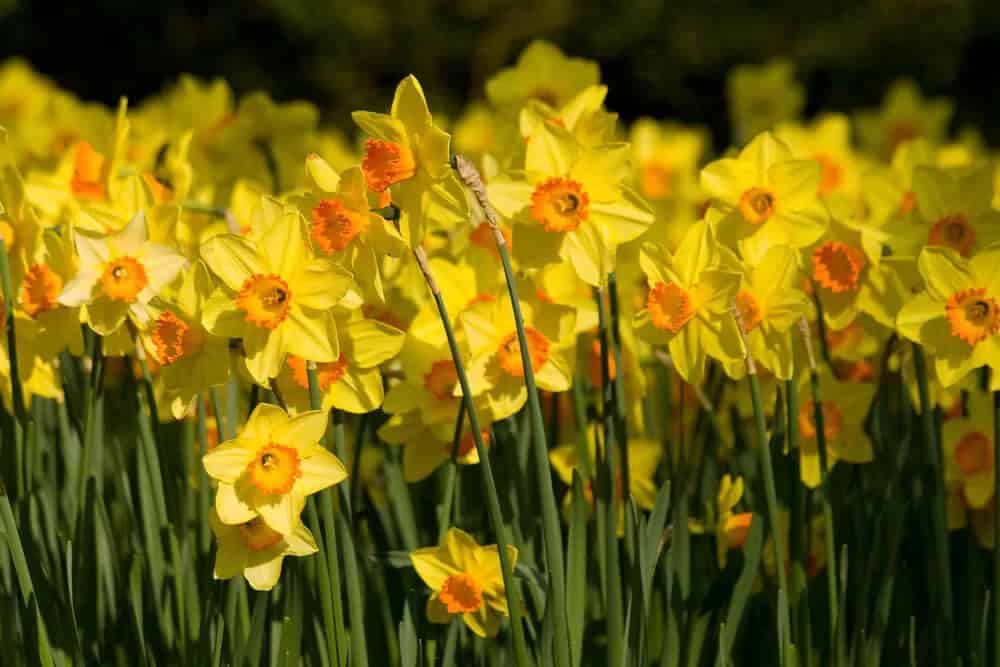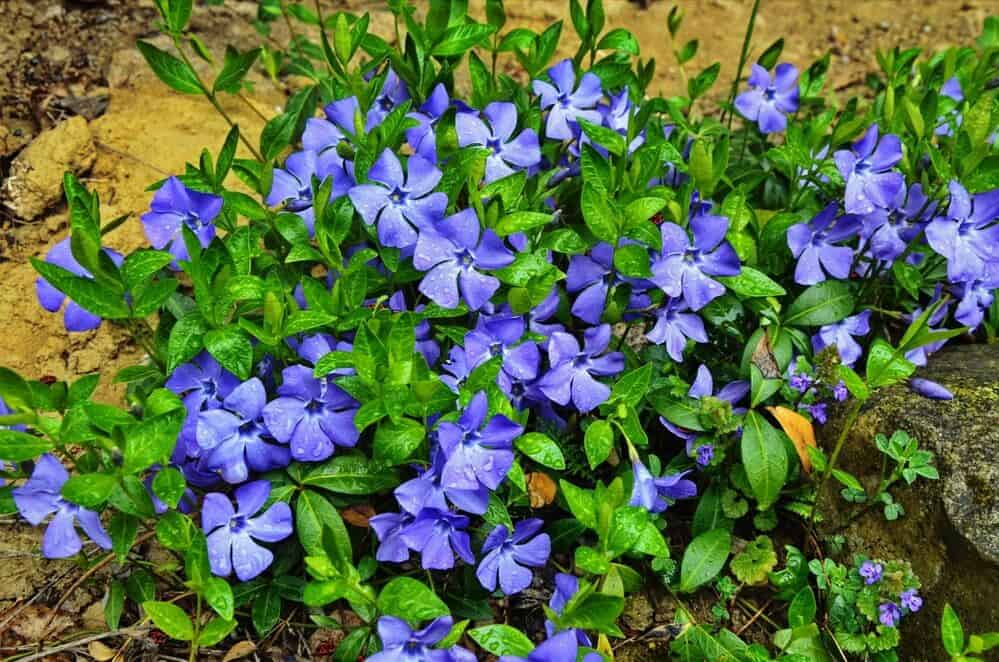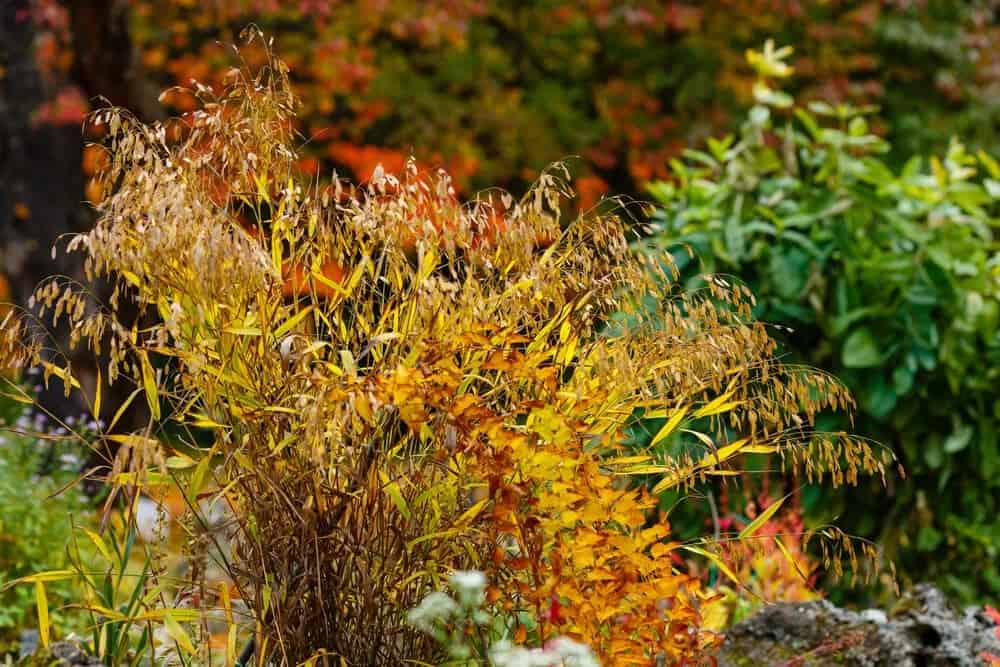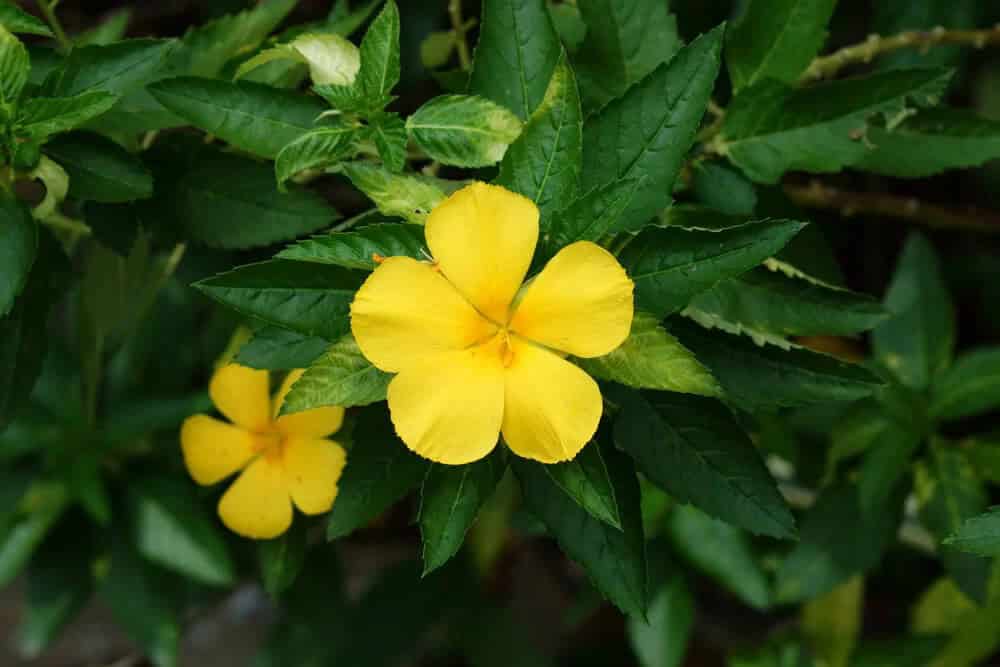While gardening for wildlife can be a delightful experience, with many species bringing joy and beauty to our outdoor spaces, not all wildlife is as well-behaved. Deer, in particular, can be a challenge for gardeners. These majestic creatures may look serene at first, but they can quickly become a nuisance if they’re devouring your landscaping. In shady gardens, the problem is even more pronounced, as deer are drawn to water-rich plants that thrive in these conditions.
However, there is hope: many shade-tolerant plants have evolved to be resistant to deer grazing, either due to tough foliage, low-growing habits, or toxicity. Below, you’ll find a curated selection of the best and most deer-proof ornamentals for shade gardens in any climate, as well as some frequently asked questions about cultivating a deer-resistant landscape.
Key Takeaways
When it comes to deer-resistant landscaping, it’s essential to avoid planting species that are known to attract these herbivores. Examples of such plants include hostas, lilies, phlox, and dahlias – a type of flower often referred to as ‘deer bon-bons.
‘ Deer tend to steer clear of certain plants for one of four primary reasons: they’re too low-lying to access easily, their foliage is unpalatable due to its toughness or spines, they emit strong scents that deer find unpleasant, or they contain toxins that are off-putting to the animals.
While toxic plants can be highly effective in deterring deer, it’s crucial to exercise caution when incorporating them into your garden, as many of these species are also toxic to other mammals, including dogs, cats, and children. If you have pets or young ones, it’s best to opt for alternative deer-resistant options that won’t pose a risk to their safety.
Another category of plants that tend to resist damage from deer includes those that go dormant or die back during the winter months when food is scarce, only to emerge again in late spring or summer once mating and fawning seasons have passed. While these plants may still suffer some browsing damage, they generally won’t be severely affected. Ultimately, there is no plant that is completely off-limits to deer under all circumstances.
However, by selecting species that are not only unpalatable but also resilient in the face of deer browsing, you can create a more deer-friendly landscape.
15 Shade-Loving Ornamentals To Keep the Deer Away
Cardinal Flower (Lobelia cardinalis)
The cardinal flower is a striking native species that thrives in shaded environments. Its vibrant red blooms are a summer spectacle, drawing in a variety of pollinators like bumblebees and hummingbirds – although, surprisingly, cardinals themselves aren’t typically attracted to it! On the downside, this plant has a bit of a toxic edge, making it unappealing to deer unless they’re extremely hungry. Rutgers gives it a solid ‘B’ rating, indicating that damage is rare.
One important consideration when growing cardinal flower is its thirst for moisture. It will not tolerate dry soil and instead prefers slow-draining soils or shaded areas where the afternoon sun won’t scorch its delicate leaves. Be sure to keep the soil consistently moist to ensure optimal growth.
Corydalis (Corydalis)
Among the deer-proof shade garden standouts, Corydalis shines brightest. Its reputation for being unappealing to deer is well-deserved, with Rutgers awarding it an ‘A’ rating. Moreover, its ability to thrive in deep shade sets it apart from other ornamentals. The plant’s unique fern-like foliage and large, tubular flowers are unmatched by its competitors. To top it off, many species of Corydalis exhibit impressive drought tolerance, performing well even in dry conditions.
However, Corydalis is not without its limitations. It will not tolerate poorly-drained soil and performs poorly in humid or swampy climates like the Deep South. On a positive note, when conditions are favorable, Corydalis has a tendency to self-seed and spread aggressively. As such, it’s essential to keep an eye on your plantings to ensure they don’t overstep their boundaries.
Wild Ginger (Asarum canadensis)
Wild ginger boasts a trifecta of advantages making it an attractive addition to any shade garden. Native to North America, it thrives in the deep shade of eastern woodlands, where its unique characteristics allow it to outcompete other plants for resources. Its leaves and roots contain volatile compounds that render it unpalatable to deer, providing a natural deterrent against these pesky herbivores.
This remarkable plant also assumes an important structural role by forming a lush, heart-shaped leaf ground cover reminiscent of violets (Viola spp.). But its utility doesn’t stop there! While deer may find it unappetizing, wild ginger’s roots are not only edible but were historically used as a substitute for ginger by early settlers. Given these attributes, wild ginger is an excellent choice for any gardener seeking shade-tolerant plants that can withstand the presence of deer.
Royal Fern (Osmunda regalis)
Royal ferns are remarkable for their ability to thrive in a wide range of conditions. These adaptable plants can be found almost everywhere, from the eastern United States to global locations. Notably, they possess natural defenses that deter deer and rabbits, making them an attractive option for gardeners seeking low-maintenance options.
In regions with mild summers, royal ferns can tolerate full sun as long as consistent moisture is provided.
However, in hotter climates like the South, they will perform best in deep shade, particularly when planted in rich, acidic soils that mimic their natural habitat. Interestingly, royal ferns are also well-suited for swampy or slowly-draining soils, making them an excellent choice for rain gardens or challenging areas that require a hardy, low-fuss plant.
Columbine (Aquilegia spp.)
Columbines have earned a spot as beloved shade garden staples due to their remarkable resilience and ability to thrive in a wide range of soil conditions – from soggy to rocky. The vibrant, intricate blooms that adorn these plants come in an astonishing array of colors, making them a true delight for the eyes. Even after the flowers have faded, columbines’ delicate, fern-like foliage provides a charming ground cover that can add depth and texture to even the shadiest of areas.
While deer may occasionally consume columbine foliage under specific circumstances, these plants tend to fly under their radar due to their relatively low profile and lack of appealing stems. Moreover, columbines have a unique habit of dying back to the ground during winter, rendering them essentially invisible to hungry deer at the peak of their feeding season.
Lungwort (Pulmonaria officinalis)
Lungwort’s unique charm stems from its intriguing history as a lung remedy in ancient times. The doctrine of signatures, a medieval concept, suggests that the plant’s mottled foliage resembles diseased lungs, thus hinting at its medicinal properties. Today, this ornamental gem is prized for its ability to thrive in deep shade and withstand hungry deer without complaint.
Although it may not be the most show-stopping or immediately attention-grabbing garden addition, lungwort exudes a slow-burning allure that can enhance any outdoor space. The contrast between its variegated leaves and small, dark blue-purple flowers is particularly striking when massed as a ground cover. Furthermore, its low profile and bitter taste ensure that deer will overlook it entirely.
Ground Ivy (Glechoma hederacea)
While ground ivy may not be as widely cultivated in gardens today as it once was, its unique characteristics make it an attractive option for those seeking a low-maintenance, deer-deterring ground cover. Native to Europe, but naturalized throughout North America due to deliberate introduction by early settlers, this member of the mint family (Lamiaceae) boasts a strong, pungent aroma that deer find particularly unpalatable.
The plant’s ivy-like foliage and small, blue blooms add to its appeal, making it an excellent choice for those seeking a durable, evergreen ground cover that requires no mowing and won’t succumb to the grazing of hungry deer.
Buckeye (Aesculus spp.)
Native to the southeastern United States, buckeyes thrive in riparian woodlands stretching from Texas to Virginia. These shrubs are accustomed to warm, shady conditions, but two popular varieties – the ornamental bottlebrush buckeye (A. parviflora) and the wild red buckeye (A. pavia) – display impressive cold hardiness, withstanding temperatures as low as those in zone 5.
The showy clusters of flowers they produce come in a range of colors including white, yellow, and red, and emerge earlier than many ornamentals, likely an adaptation to their forest habitat where they grow before taller neighbors leaf out. Additionally, buckeyes have the unique ability to resist deer grazing and the red buckeye variety is also drought-tolerant, making them a low-maintenance addition to any garden.
Narcissus (Narcissus spp.)
The genus Narcissus is home to a variety of ornamental plants, including daffodils, jonquils, and paper-whites. While these flowers have been a staple of modern gardens since their inception, it’s essential to note that they possess toxic properties. The lycorine contained within the Narcissus family can be fatal to larger mammals, including humans, making them an effective deer-resistant option. This toxicity is what keeps deer at bay, even when they’re famished.
What’s more, many species and varieties of Narcissus come in a diverse range of colors and bloom shapes that can thrive in partial shade. Jonquils and narcissus are particularly shade-tolerant, but other options will also perform well in afternoon shade.
Periwinkles (Vinca minor)
When seeking a low-maintenance ground cover that can withstand deer and harsh weather conditions, periwinkles are an excellent choice. Their evergreen foliage provides year-round interest, while their vibrant blooms add a pop of color. However, it’s essential to keep in mind that periwinkles have the potential to become invasive if left unchecked. To avoid this issue, monitor their growth and prune them regularly.
For those who want to achieve the signature ‘periwinkle look’ without the risk of invasiveness, consider Madagascar periwinkles (Catharanthus roseus). This variety offers a similar appearance but is less cold-hardy, making it a more controlled option.
Inland Sea Oats (Chasmanthium latifolium)
Siberian Bugloss (Brunnera macrophylla)
Siberian bugloss is a stalwart in shaded gardens, where its ability to thrive in the absence of direct sunlight sets it apart. This hardy perennial, native to Siberia, can be found growing contentedly between USDA zones 3 and 8. Its unique foliage, with leaves shaped like hearts, boasts a rough texture that makes it unappealing to deer and rabbits – a characteristic that earns it a spot as an excellent browse-proof plant for shadiest areas.
While its pale-blue flowers are undeniably charming, the year-round visual interest of its lush leaves is also a significant draw.
Bugleweed (Ajuga reptans)
Bugleweed is a reliable choice for shade gardens due to its rapid growth rate and adaptability. This versatile ground cover thrives in conditions with partial sun, producing vibrant blooms, but it also flourishes in deep shade. One of its most impressive features is its ability to suppress weeds through sheer vigor, effectively ‘self-weeding’ the area. While not toxic, bugleweed’s leaves are unpalatable to deer due to their low-growing habit and unpleasant aroma.
The plant’s bitterness deters even the most curious deer, ensuring your plants remain safe from all but the most persistent herbivores.
Yellow Sage (Salvia koyamae)
Aromatic plants are a fantastic choice for deer-resistant gardens, as they not only repel but actively deter these unwanted visitors. Many species of sage (Salvia) fit this bill, making them excellent additions to any garden looking to minimize deer attraction. However, it’s worth noting that most sages require full sun to thrive, which can be a challenge for shade-gardens.
A notable exception is yellow sage, a native Japanese plant that has gained popularity worldwide due to its low-maintenance requirements and ability to tolerate partial shade. This attractive and aromatic variety boasts bright yellow flowers that attract beneficial pollinators while keeping deer and rabbits at bay.
Ageratum (Ageratum houstonianum)
Ageratum, also known as floss flower, is a low-maintenance wildflower that thrives in the sunflower family (Asteraceae). Its ease of growth has earned it a reputation as something of an unwanted guest in many southern US gardens. However, when cultivated in a deliberate manner, its vibrant blue blooms take center stage, providing a long-lasting display in the fall and serving as a vital food source for native butterflies. The best part?
Ageratum’s toxicity to deer means it remains unscathed by their browsing habits.
Ageratum is just one example of a group of related plants that can bring similar benefits to your garden. Other options include dusty miller (Senecio cineraria), blue mistflower (Conoclinium coelestinum), and Gregg’s mistflower (Conoclinium greggii). These plants share the same deer-deterring compounds, making them excellent additions to a deer-proof garden.
Frequently Asked Questions About Deer-Resistant Shade Plants
What plant do deer hate the most?
While the inner workings of a deer’s mind may remain a mystery, there is ample evidence to make some educated guesses about what plants they tend to avoid. It seems that deer are generally drawn to one of three types of plants: those with physical characteristics that make them unpalatable, such as tough foliage or spines; those with strong aromas that are noxious to them; and finally, plants that are toxic to deer.
The latter category includes milkweeds and spurges, which while useful for a deer-resistant garden, should be handled with care due to their toxicity to domestic animals and humans alike. If you’re planning a family-friendly or pet-friendly yard, it may be wise to opt for the noxious plants instead.
What is the most deer-resistant flower?
While there’s no definitive answer on what constitutes a deer-resistant plant, it largely depends on one’s definition of the term. Nevertheless, some plants not only repel deer due to their unpalatability but are also toxic to them. In such cases, deer will only consume these options when they’re facing extreme hunger or desperation. Illustrative examples of shade-tolerant, toxic flowers that fit this description include the cardinal flower and daffodils.
Are dahlias deer resistant?
While dahlias are often touted as deer-resistant, this reputation is somewhat misleading. The truth is that they may not be the most appealing option for deer, but they’re certainly not off-limits either. In fact, if other food sources are scarce, deer will gladly munch on dahlias. This underscores the importance of taking steps to protect your dahlia plants from these voracious browsers.
Consider using physical barriers or planting them alongside unpalatable companion species that will deter deer from exploring the area in the first place.
Will lavender keep deer away?
Lavender’s pungent aroma and unpalatable taste make it an effective deer deterrent. This characteristic isn’t unique to lavender; other robustly scented herbs like oregano, mint, and sage can also repel deer. In fact, these plants can be so potent that they effectively conceal the presence of desired species, making them a valuable addition to any garden or yard where wildlife control is necessary.
What smell do deer hate?
While deer can be attracted to certain plants, they tend to avoid those with potent, pungent scents. Certain herbs like Artemisia, Salvia, and Rosmarinus are known for their strong aromas and can serve as a natural deterrent. By incorporating these aromatic plants into your landscape design, you can create a barrier that deters deer from reaching more desirable plants, which are then protected within the ‘force field’ of fragrance.
15 of the Most Deer-Resistant Plants for Your Shade Garden
While deer may occasionally wander into your garden, it’s not necessarily a guarantee that they’ll leave your plants in shambles. Like humans, deer have their own food preferences, and the appeal of your garden is directly tied to the edibility of its contents. While there’s no such thing as an entirely ‘deer-proof’ garden, you can still take steps to make it less appetizing to these unwanted visitors.
By incorporating plants that are unpalatable or even toxic to deer, you’ll discourage all but the most desperate and reckless deer from making a meal out of your landscape.

